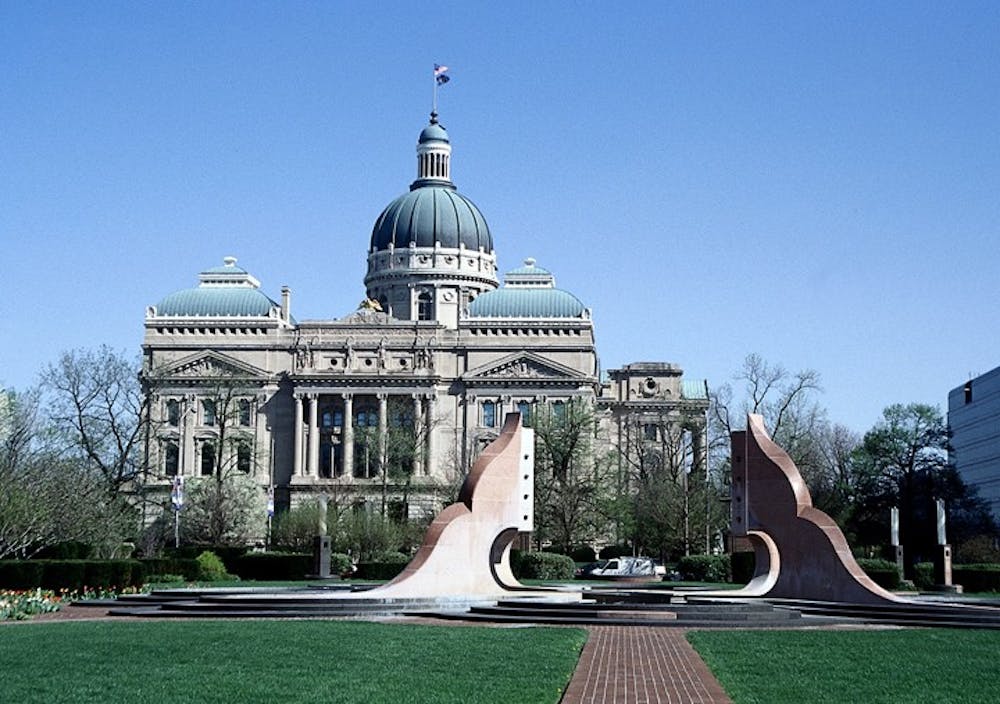State funding to Ball State
2004-05: $124,874,000
2005-06: $124,351,000
2006-07: $124,351,000
2007-08: $126,384,000
2008-09: $129,077,000
2009-10: $125,529,000
2010-11: $122,395,000
2011-12: $118,723,000
2012-13: $118,723,000
2013-14: $117,973,000
Source: Office of University Budgets
Ball State would get its first increase in state funding in six years if a proposed budget goes through Indiana's legislature.
The Indiana House of Representatives recently passed a draft of the state budget, which includes a $7 million, or nearly half of one percent, increase of new money to Ball State.
Since the state does its biennial budget every two years, it has been tasked with figuring out state allocations this year.
“This would be the first operating increase that we’ve had since 2009,” said Bernard Hannon, Ball State treasurer. “And that’s all good news.”
The general operating budget funds areas such as academic programs and faculty salaries and benefits. The state also provides money for the university to keep up maintenance on its facilities.
Before the 2014-15 academic year, the state had reduced support to Ball State’s operating budget every year since the 2008 recession, according to the university Fact Book.
On top of the cuts from state, the recession had also put pressure on Indiana colleges, said Ball State Professor of History Bruce Geelhoed. Geelhoed came to Ball State in the 70s and co-authored a study on the history of Ball State.
In March 2010, former Gov. Mitch Daniels requested seven public Indiana colleges to cut a collective $150 million from their budgets to make up for the state's decline in tax revenue.
Ball State had to cut $15 million, which it took from faculty benefits, while adding tuition increases.
"When you have a time if economic scarcity, where states' level of income is not expanding, what higher education institutions do is turn to their students," Geelhoed said.
Ball State’s decrease followed a larger trend in declining support to higher education. Indiana University-Bloomington and Purdue-West Lafayette show similar trends in reduction percentages for their budgets.
Outside of Indiana, Ball State’s president Paul Ferguson said he dealt with similar issues during his time at the University of Maine.
"The percentages of how much is going from the state to the university and how much is tuition-driven have just flipped over the last decade and a half, so that’s where we have that conversation about student debt and students having to take that burden to fund higher education,” Ferguson said in an interview in January.
According to the Indiana Secretary of State, on an individual level, Ball State has suffered from losses in its cut from the state even more than Purdue and IU, partly because of Indiana’s performance-based funding formula.
The formula awards universities based on measurements such as on-time graduation rates and enrollment growth. Enrollment growth is more common at smaller colleges such as Ivy Tech and other new community colleges, Hannon said. Ball State has had more steady enrollment numbers year-to-year.
“The formula has been set up to reward growth,” Hannon said. “We have not been a growing campus.”
It also favors "high-impact" degree completion, which includes the rate that a school turns out science, technology, math and engineering program graduates, according to the Indiana Commission for Higher Education.
Since IU and Purdue have larger programs in what the state considers STEM, they have also received a larger portion of funding historically.
“The double whammy of the state in recession and having reduced revenues, and having the performance-based funding favoring large and growing campuses are the real reasons why Ball State has not done particularly well in gaining a lot of money in operating appropriations,” Hannon said.
To deal with the falling state support, Ferguson recently mentioned his "entrepreneurial approach" at his State of the University address, which would aim to encourage students to work on more real-world projects and research as part of their classes.
The university also currently receives a separate item of funding allocated for the “Entrepreneurial University,” according to past budget audits from the Indiana Secretary of State's Office.
This money has funded areas such as immersive learning and Ball State's entrepreneurial minor program, Hannon said.
The line item fund totaled about $6.6 million this year, but the proposed House budget took about $3.5 million of that and set it into the base operating appropriation. While line items can be removed year-to-year, the base fund is more permanent annually.
“It now becomes a permanent appropriation for us,” Hannon said. “We think it’s a recognition then that Ball State is indeed this ideal of an entrepreneurial university. Therefore the [Indiana Commission for Higher Education] has recognized that entrepreneurial characteristic by putting it into our base.”
Hannon said the line item could be a potential area of growth in the future if Ball State stays consistent with the entrepreneurial push.
This early version of the draft will go the the State Senate this month to be amended, if necessary, and voted on before going to the governor.




